041018_YKMV_A12.pdf







April 12, 2018 • Page 12
shop online at www.missourivalleyshopper.com
Spring Home
Improvement
& Car Care
Safety Measures For Teen Drivers
Young adults gain independence
through a series of milestones throughout their youth. But few such milestones
are more anxiously anticipated than the
day when teenagers earn their drivers’
licenses.
For teenagers, drivers’ licenses mean
the difference between being at the mercy
of adults for transportation and being
able to set off on their own. Even though a
license to drive indicates a teen has passed
the written and road tests necessary to
drive without adults present, newly minted
licensed drivers may still not be ready to
drive without supervision. In fact, statistics
indicate that teenagers may benefit from a
little extra instruction and guidance before
they’re given the keys to the family car.
The U.S. Centers for Disease Control
and Prevention say that motor vehicle
crashes are the leading cause of death
among American teens. According to State
Farm, young Canadians represent only 13
percent of the licensed driving population,
but account for approximately 20 percent
of the motor vehicle-related deaths and
injuries across the country. The highest
per-driver and per-distance fatality rates
are found among drivers between the ages
of 16 and 19. According to Geico, one in
five 16-year-old drivers has an accident in
their first year of driving.
Teenagers who want to drive and stay
safe on the road can employ these safety
tips.
• Keep an open attitude. Consider
increasing road time under the instruction
of an adult and learn from their guidance.
Ask for help if there is a driving skill you
haven’t mastered, such as merging onto a
busy highway or parallel parking.
• Limit other teen passengers. The
CDC says the presence of teen passengers
increases unsupervised teen drivers’ crash
risk. Until you are secure behind the wheel,
avoid the temptation to give a bunch of
friends a ride.
• Stick to daylight driving. Geico says
the risk of a fatal crash is three times greater at night for every mile driven. Reduced
visibility and reaction time can contribute
to crashes. Gain ample experience driving
during daytime hours and make sure you
are completely comfortable behind the
wheel before setting out at night.
• Practice in all conditions. Safe driving
involves making smart decisions even
when driving conditions are poor. With an
adult in the passenger seat, practice driving in inclement weather, only venturing
Teen drivers have an elevated crash risk.
out in such conditions on your own when
you feel ready to do so.
• Turn your phone off. Smartphones put
all motorists at risk of accident. In the time it
takes drivers to look at incoming texts, they
may have driven several hundred feet without their eyes on the road. Make it a policy to
turn smartphones off while driving.
• Slow down. Speed is a common factor
in automotive crashes involving teens. Follow posted speed limits at all times.
• Drive unimpaired. Do not take drugs
or consume alcohol or other substances
that impair your ability to drive.
Teens can stay safe behind the wheel by
playing it smart.
nMetro Creative Connections
Carbon Monoxide Remediation
Carbon monoxide is a colorless, odorless gas that can be deadly. Because carbon
monoxide is found in the fumes produced
when fuel is burned, it is present in and
around homes. As a result, homeowners
should be aware of carbon monoxide and
make every effort to detect its presence.
CO forms most readily when there is
insufficient oxygen to complete combustion and produce carbon dioxide. Hot water
closets, furnaces in crawlspaces, heating
appliances in attics, and other contained areas are common areas where CO can form.
The U.S. Centers for Disease Control and
Prevention says that thousands of people
visit emergency rooms and are hospitalized
because of CO poisoning every year. While
CO is a risk for just about anyone, infants,
the elderly, those with breathing problems
or chronic heart disease, and people with
anemia are most likely to get sick from CO.
CO has earned the moniker “the silent
killer” because it cannot be identified
without the presence of a carbon monoxide
detector. If a person believes he or she is
smelling carbon monoxide, that person
is probably mistaking the odor for other
combustion byproducts that the human
nose can sense.
CO is a byproduct of vehicle exhaust,
boat engines, stoves, lanterns, grills,
furnaces, and fireplaces. CO is produced
anytime something is burning. That is why
it is essential that products designed to be
used outdoors are used exclusively outside,
and that indoor appliances are properly
vented to the outdoors. CO can build up
indoors and poison people and pets who
breathe it in.
Some people may not recognize that
CO is problematic in a home until multiple residents start complaining of similar
symptoms. Common CO
poisoning symptoms include nausea and vomiting,
dizziness, chest pain, confusion, headache, and other
flu-like symptoms, advises
the consumer advocacy
Ferdig’s Transmissions
& Exhaust
Locally Owned & Operated
group Carbon Monoxide
Kills. Those with repeated
exposure to high levels of
CO may eventually develop
cerebral edema, which is
a swelling of the brain. CO
can compress brain cells
and destroy them, leading
to neurological issues and
death. CO poisoning is actually the result of the head
and heart not receiving sufficient oxygen.
CO detectors can save
lives and should be installed in all homes and
apartments. The National
Fire Protection Association
says CO detectors “shall be
centrally located outside of
each separate sleeping area in the immediate vicinity of the bedrooms.” Individuals
should follow the manufacturer instructions regarding where on the wall or ceiling
the CO detectors should be mounted. As
an added safety precaution, CO detectors
should be placed on every floor of the
home.
Gas sensors in CO alarms have limited
life spans, so they should be replaced
generally every five to six years, because
calibrating and testing for CO is more difficult than simply replacing the alarms.
Installing or replacing carbon monoxide
detectors is an easy improvement that can
help save lives.
nMetro Creative Connections
Over 50 Years
Experience in the
Yankton area!
Your One-Stop Shop For
Complete Automotive Repair!
•Foreign • Standard • Clutches
•Domestic • Automatic •Batteries
Auto Body & Collision Repair • Free Estimates & Loaner Car
Auto Glass Replacement
“Caring for our customers and their cars”
JASON ORR
Now Offering A/C
Recharging and Repair!
Wayne Buss - Cy Hohbach - Casey Lecher
OWNER/OPERATOR
605.665.9012 220 East 3rd St., Yankton
INSURED
CALL OR TEXT: 605.760.3680
YANKTONWINDOWCLEANING@GMAIL.COM
Call Kalins Indoor Comfort for
an AC Precision Tune-Up!
AC Tune-Ups should be done
by a Kalins Licensed Technician...
Why?
• We have over 95 years in the business
• Tune-Ups prevent costly breakdowns
• Tune-Ups extend the life of your equipment
• We service all makes and models
605-665-7069
2004 Locust - YANKTON
M-F: 8-5
We work with
all insurance
providers
A Variety of Beautiful Flooring
Options Just In Time For Spring!
• Carpet
• Vinyl
• Tile
• Wood
• Laminate
Bob Bierle
Service Technician
Over 20 Years of Experience
When You Want Comfort…You Want Kalins!
Vermillion: 888.871.2635 • Yankton: 888.409.8094 • Sioux City: 888.706.4544
kalinsindoor.com
en Carpet
Lars
Sales & Installation
208 Walnut
Historic Downtown Yankton
605.665.2067
Serving Yankton And The Surrounding Communities For Over 40 Years













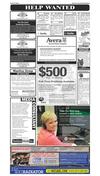
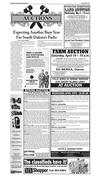

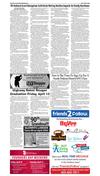
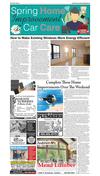

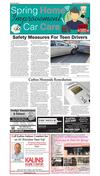
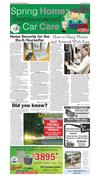
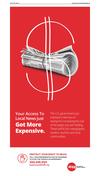
 Previous Page
Previous Page





